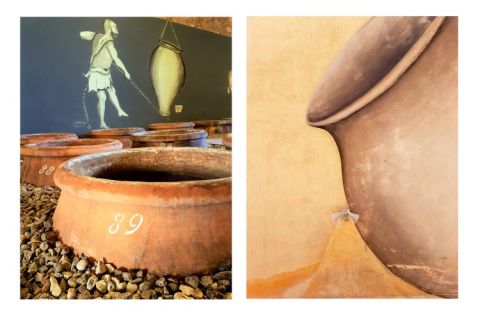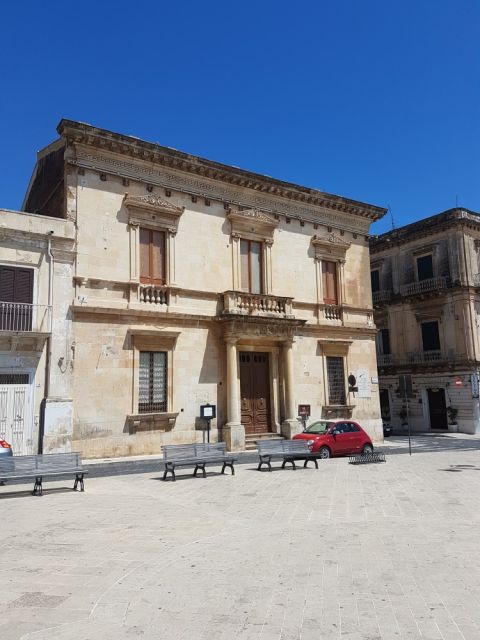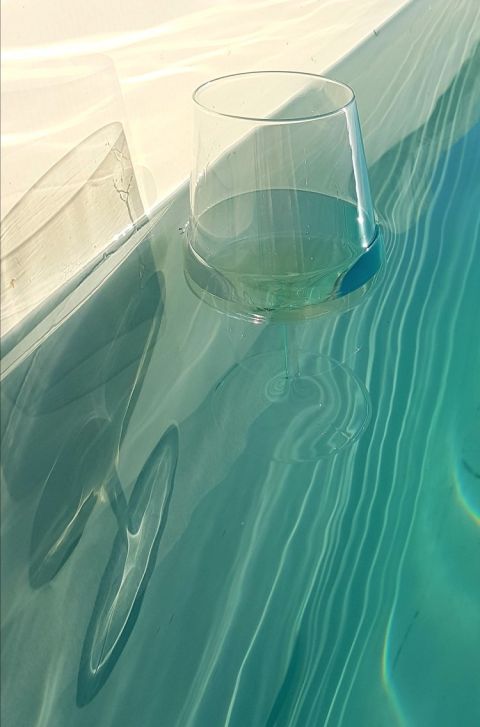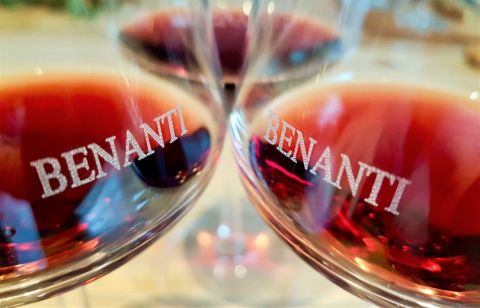Palm trees, sandy soils, bright heat, and colourful, weathered paintwork characterise Planeta’s Buonivini estate (above). Tunisia is only 100 miles (160 km) away, south-west across the Strait of Sicily, but you could believe you’re right there. Thankfully, Planeta’s portfolio includes light, heat-defying styles such as refreshing dry Moscato and bright, cherry-scented Cerasuolo di Vittoria (I enjoyed this slightly chilled). These proved a blessed relief during a hot visit in summer 2018 and made the tasting a stand-out. Winemaking facilities at Buonivini are below ground, where temperatures are cool and consistent. Planeta is a key driving force in Sicily’s rejuvenation, helping turn the region from one associated with mass-produced anonymous bulk wine into one with a clear and diverse range of good-quality wines.
The COS winery and its amphorae were top of my ‘must see’ list when in Sicily. The ‘O’ in COS is Giusto Occhipinti (father to Arianna, mentioned below). Family is a theme woven right through the fabric of modern Sicilian winemaking. History is brought back to life at COS, where large clay amphorae are dug into the earth and used for making wine in various styles. The amphora theme is plastered on every wall around the COS winery. Look closely, and you’ll see that the large amphora on the right is actually a painted wall with a protruding tap.
Long, relaxed lunches are a core part of the good life in Sicily. This shot is one of my favourites from the island. Although not of wine or vines, it captures Sicily perfectly for me. It was taken from the lunch table at a small restaurant where large (very large) glasses of cold Carricante were served with plates of fresh, garlic-rich seafood spaghetti.
On summer afternoons Avola has a distinctly spaghetti-western feel: hot, deserted and shuttered. Nonetheless, it registers on the wine geek’s travel itinerary as the town that gave its name to the Nero d’Avola grape. The only places open when we visited were a convenience store (with a greying dog sprawled across the doorway) and a tiny, chic café offering superior gelato and strong coffee. The many smiling, tanned, young staff told of low wages but a relaxed lifestyle and abundant sunshine. The racy red Fiat 500 parked across the piazza brought a splash of zing and modernity to the scene, but a long-suffering mule would not have looked out of place there.
This isn’t just any wine. Or any pool. This is Occhipinti SP68 Bianco, floating alongside me in the pool at Baglio Occhipinti after a long day of sweltering vineyards and generous tasting rooms. Occhipinti is a traditional family name in the Ragusa area. It translates literally, rather wonderfully, as ‘painted eyes’, which fits the natural energy and sparkle of Arianna Occhipinti who runs this smart bed and breakfast, and makes the wine. This pool is naturally heated (by abundant sunshine) and surrounded by geckos, dry-stone walls and poppy-strewn (in May) organic vineyards. SP68 Bianco is vibrant but unpretentious – a great metaphor for Sicily as a whole. It’s an island that really knows how to blend intense energy with effortless relaxation.
Volcanic rocks, painstakingly terraced, picture-perfect … this is modern Etna all over. Torre Mora is a recently rejuvenated vineyard, representative of Etna’s new-found success and future potential. Just out of shot when I took this was Giacomo Panicacci – my friend and former Wine-Searcher.com colleague, now a diligent brand ambassador for Piccini. Mario Piccini’s family has invested heavily in a new Etna vineyard here at Torre Mora, which the company acquired and restored in 2016.
Frank Cornelissen’s vineyard in the Contrada Barbabecchi rests on Etna’s northern slopes, 900 m above sea level. Etna’s 133 contrade are effectively ‘crus’, but less rigorously demarcated than those of Barolo or Burgundy due to the complex lava-flow landscape here. For centuries, the contrade's names were just those of farms. They have only recently been adapted for distinguishing between the better vineyard sites. Cornelissen himself echoes that very Sicilian theme of history meeting modernity – a modern and innovative producer whose wines are natural, organic and biodynamic, as they would have been centuries ago. His Susucaru wines are currently among Sicily’s most fashionable.
Clarity and ruby transparency are trademarks of wines made from Nerello Mascalese. Some of the most widely respected are produced at the Benanti family winery by founder Giuseppe Benanti’s sons Antonio and Salvino. At rather short notice, Antonio kindly laid on a generous tasting for me and a few friends, whence this photo. The Benantis add an aristocratic element to Sicily’s wine story. Antonio was unshakeably chic and graceful throughout the visit. Behind the winery is an old wine press used by several generations of the family to make its own wine, before Giuseppe turned this small winemaking tradition into a commercial venture. The press is now a museum piece, in strong contrast to what lies inside the winery – a modern blend of immaculate stainless steel, high-quality modern glassware and eye-catching artwork. One artwork in particular grabbed my attention – the mural below. It captures a lot about the modern Sicilian wine scene, summing up creativity, generosity, service and the colourful Sicilian spirit.






















